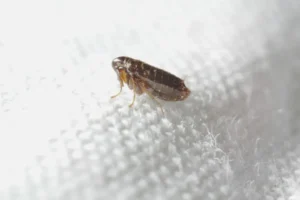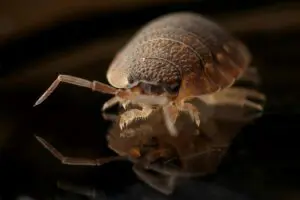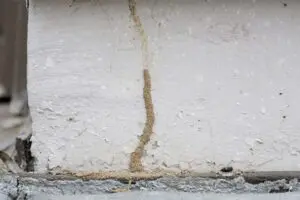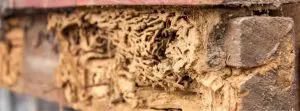

Are Bed Bugs Big Enough to See?
“How big are bed bugs?” This is a common question when it comes to these small yet ominous pests. Bed bugs are tiny, reddish-brown, wingless insects that are a part of the Cimicidae family. They usually measure around 5 to 7 millimeters in length and are about the size of an apple seed when they are fully grown. But despite their small size, bed bugs are visible to the eye when you are looking for them.
However, these bugs are adept at hiding in cracks, crevices, and in other inconspicuous areas, making them difficult to spot. With this in mind, instead of relying on spotting the bed bugs themselves, it's often more effective to look out for signs of their presence.
The signs of a bed bug infestation include:
- Fecal Stains: Look for dark, rust-colored stains on bedding, mattresses, or nearby furniture.
- Blood Stains: Keep an eye out for reddish-brown stains on sheets or pajamas, indicating crushed bed bugs.
- Shed Skins: Bed bugs shed their exoskeletons as they grow, which means you may see translucent shell casings in your space.
- Musty Odor: Bed bugs give off a distinct smell. If you notice a sweet, musty odor - you may have a bed bug infestation.
Given their quiet nature, detecting bed bugs can be challenging, but by being vigilant for these signs, homeowners or hotel owners will be able to identify bed bug infestations early and take immediate action to address them with bed bug pest control experts.
How Big are Bed Bug Nymphs?
When bed bugs are in their juvenile stage, they are known as nymphs and it is important to keep an eye out for these little insects too. So, how big are bed bugs in their juvenile stage?
Bed bug nymphs are significantly smaller than adult bed bugs and measure a fraction of an inch in length. They begin their lives at about 1.5 millimeters - essentially the size of a pinhead - and gradually grow larger with each molt.
But one distinguishing characteristic of bed bug nymphs is their translucent appearance. Unlike adult bed bugs, nymphs have a lighter, seemingly translucent exoskeleton which makes them harder to spot. As they feed and grow into adulthood, their exoskeleton becomes darker.
Due to their small size and translucent nature, bed bug nymphs usually go unnoticed which allows infestations to spread quickly. With this in mind, homeowners and hotel owners should be exceptionally vigilant when looking for bed bugs, paying close attention to seams, folds, and crevices where nymphs may easily hide. Regular inspections and prompt treatment are essential for preventing bed bug infestations from becoming more widespread and difficult to control.
Do Bed Bugs Change Size?
When it comes to the question “how big are bed bugs” it's important to remember that their size can vary depending on various factors, including their life stage and whether they have recently fed. Bed bugs go through multiple molting stages, shedding their exoskeletons and growing larger with each shed. After a blood meal, bed bugs also become engorged and their size increases significantly. A fully-fed adult bed bug can swell to about 9 millimeters in length which is almost double its unfed size. This engorgement can make them easier to detect, as they appear more rounded and less flat than unfed bed bugs.
What Can Be Mistaken for Bed Bugs?
Several pests and household insects can be mistaken for bed bugs due to their similar appearance or behavior. These include:
- Carpet beetles: Small, oval-shaped insects that feed on fabrics and can be found in carpets, upholstery, and clothing.
- Fleas: Tiny, wingless insects that infest pets and humans, causing itchy bites.
- Booklice: Small, pale insects that feed on mold and mildew and are often found in humid areas like bathrooms and kitchens.
While these pests may be mistaken for bed bugs it's important to note that their treatment and control methods differ significantly. Working with a professional pest control company like Excel Pest Services ensures accurate identification and effective removal of pests. Our professional technicians have the expertise and tools to differentiate between bed bugs and similar pests, ensuring the right treatment approach is implemented for effective and complete pest control.
How to Control Bed Bugs?
Controlling bed bugs requires a comprehensive approach that combines detection, treatment, and preventive measures. Begin by thoroughly inspecting your home for signs of bed bugs, focusing on common hiding spots such as mattresses, furniture, and cracks in walls. If an infestation is detected, treatment options may include heat treatments or integrated pest management techniques.
Preventive measures such as regular cleaning, decluttering, and using mattress encasements can help minimize the risk of bed bug infestations. However, for effective and lasting results, it's crucial to work with pest control experts who have the knowledge and experience to tackle bed bug problems efficiently.
Conclusion
When it comes to preventing, detecting and removing bed bugs, partner with the experts at Excel Pest Services for reliable and effective bed bug removal for residential and commercial properties.
Our team of trained technicians use the most advanced techniques and treatments to remove bed bugs from your home or business quickly and safely.
Contact Excel Pest Services today to schedule a consultation and take the first step towards a bed bug-free environment.






